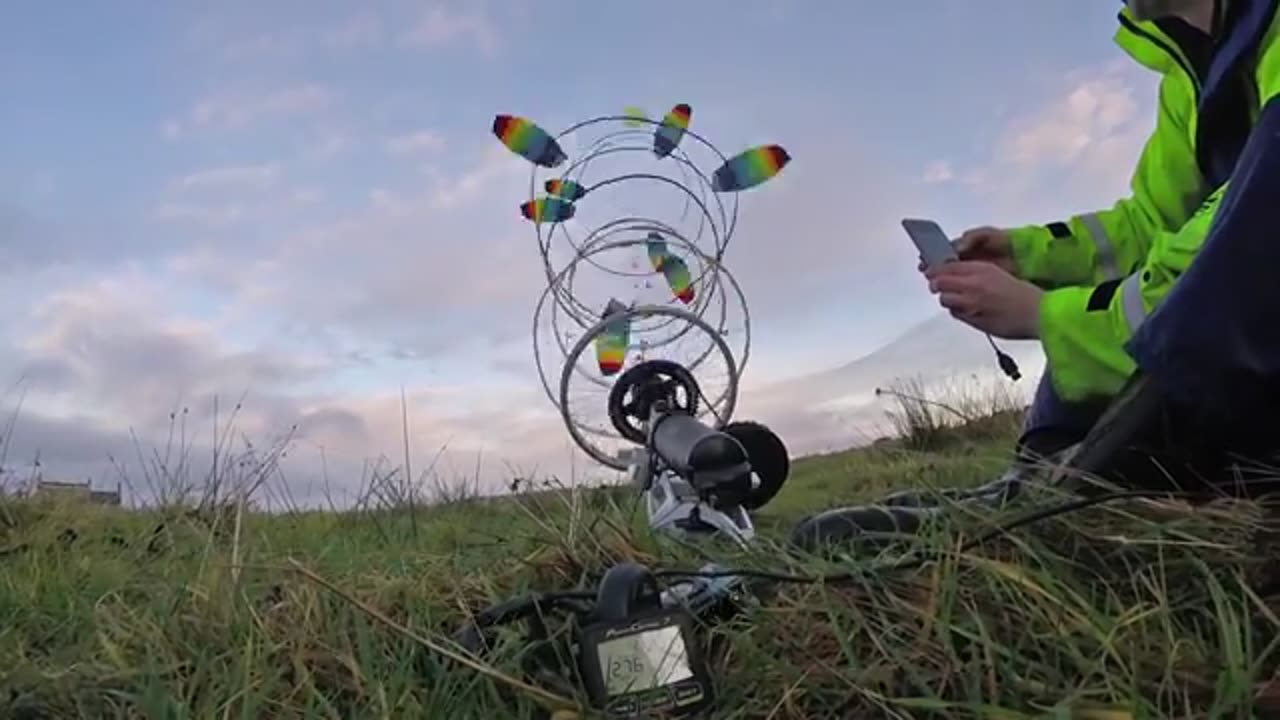Premium Only Content

3 stack Daisy flying wind turbine 608W test
The development of airborne wind energy systems is a critical step towards meeting the world's renewable energy needs. These systems harness wind energy at high altitudes, where wind speeds are stronger and more consistent. One such system, the 3 stack Daisy Flying Wind Turbine, has recently undergone testing with impressive results.
During the testing phase, the 3 stack Daisy Flying Wind Turbine was able to output 608 watts of power, making it a highly efficient source of renewable energy. The system consists of three small turbines stacked on top of each other and tethered to the ground. As the wind passes over the turbines, they spin and generate electricity, which is transmitted back to the ground via the tether.
One of the major advantages of the airborne wind energy system is its flexibility. Because it is not limited by the size and weight constraints of traditional wind turbines, it can be quickly and easily deployed to remote or hard-to-reach locations. This makes it a great option for powering off-grid communities, disaster relief efforts, or military operations.
The 3 stack Daisy Flying Wind Turbine is also highly scalable, meaning that it can be adapted to meet the needs of different energy users. By adding more turbines to the stack, the system can generate even more power, making it a great option for larger-scale energy production.
Overall, the successful testing of the 3 stack Daisy Flying Wind Turbine is a major step forward in the development of airborne wind energy systems. With ongoing research and development, these systems have the potential to become a major player in the global transition to clean energy.
-
![🔴[LIVE] China Retaliates, Breaking Inflation News & Payday Friday || The MK Show](https://1a-1791.com/video/fww1/2d/s8/1/R/r/a/B/RraBy.0kob.1-small-LIVE-China-Retaliates-Break.jpg) LIVE
LIVE
Matt Kohrs
10 hours ago🔴[LIVE] China Retaliates, Breaking Inflation News & Payday Friday || The MK Show
1,225 watching -
 LIVE
LIVE
Wendy Bell Radio
6 hours agoAll The President's Men
10,431 watching -
 LIVE
LIVE
Canada Strong and Free Network
3 hours agoCanada Strong and Free Network
183 watching -

Randi Hipper
1 hour agoFIRST CRYPTO BILL SIGNED INTO LAW! HISTORICAL MOVE EXPLAINED
8.09K -
 1:29:08
1:29:08
JULIE GREEN MINISTRIES
4 hours agoLIVE WITH JULIE
143K153 -
 5:24
5:24
SKAP ATTACK
1 day ago $5.72 earnedLuka Humiliates Mavericks in Dallas Return
41.1K9 -
 45:42
45:42
Dad Dojo Podcast
1 day ago $1.81 earnedEP27: How To Warn Your Kids About Online Dangers
30.3K1 -
 19:25
19:25
Neil McCoy-Ward
21 hours ago🔥 The EU Makes SHOCK Announcement! (Sinister Plans Revealed To..
52.3K40 -
 24:56
24:56
CatfishedOnline
1 day agoMan Insists His Internet Relationship Isn't A Romance Scam!
52.2K4 -
 28:37
28:37
Ohio State Football and Recruiting at Buckeye Huddle
14 hours agoBold Predictions for the 2025 Ohio State Spring Game
59.4K5